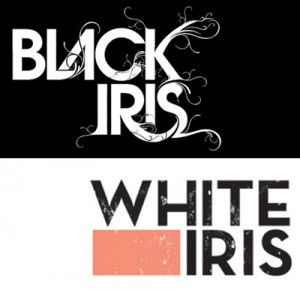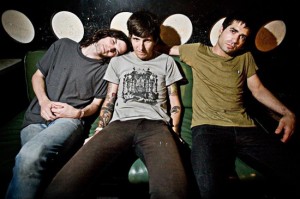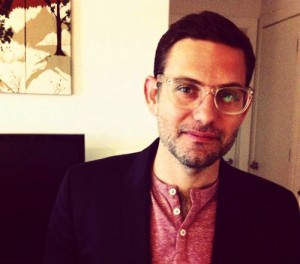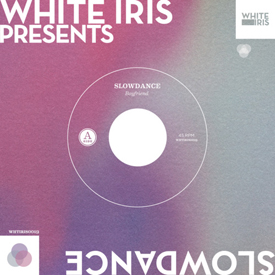Black Iris/White Iris: The Indie Rock Music House & Record Label Win-Win
WILLIAMSBURG: It’s become a popular career move in recent years, but there was a time not too long ago when indie musicians weren’t so big on writing for advertising. Of course it wasn’t for lack of interest on the agency side. As virtual instruments and in-the-box productions had become the norm, ad agency creatives began to crave more authentic-sounding tracks to score their visual media – music they’d actually listen to in real life.
But, in order to commission original works by artists of that certain aesthetic, they’d need someone on the music side to bridge the cultural divide.
One of the most successful ad music houses today, Black Iris Music, has succeeded by doing just that, and doing it better than anyone else. Since forming in 2005 in Richmond, VA – also home to The Martin Agency (Geico, Walmart) who would be a major client – Black Iris has expanded twice: first to Los Angeles where they spun-off their record label, White Iris, and more recently to Brooklyn.
Black Iris Founder / Creative Director Daron Hollowell moved back east to build in NYC what he built in Los Angeles, a roster of multi-tasking musicians, composers and producers from the local underground music scene with an interest in making original music for media.
In Los Angeles, the Black Iris / White Iris roster includes bands like Best Coast, Fool’s Gold, Electric Guest and Foreign Born. And here in NYC, the outfit has expanded to feature artists like Guards, Slowdance and Computer Magic in their label, events and advertising projects.
We spoke to Hollowell over lunch in Williamsburg earlier this summer, and gained valuable perspective on the ad music business, and emerging opportunities for active indie musicians and producers.
JB: Today, bands jump at opportunities in advertising, and there are many licensing agencies out there repping these artists’ catalogs. But in the meantime, Black Iris has been building its business around getting these musicians to write original music for advertising. What assumptions were you making starting out? What opportunities did you see?
DH: We were guys in bands going the traditional routes of touring and getting record deals. We knew some people in advertising, and there was an interest in indie music and – on our end – there was an interest in that possibility of writing for advertising.
Agencies wanted to work with bands that were up-and-coming; they wanted to be involved in breaking a band and introducing people to new music. We put two and two together…
Our assumption was that if we took the musicians we knew from the indie community and had them apply their skills directly to this world then we could bridge that gap in a way that hadn’t quite been approached by a music house at that point. [That is,] recruiting indie musicians to apply their skills to original music for advertising rather than licensing their music.
At the time we started, licensing was still questionable for a lot of bands. In the 8 years we’ve been doing this, it’s become kind of a non-issue. But originally, this would allow people who were playing in bands to be able to work in that context but not necessarily have to lend their art to it – their band name didn’t have to be affiliated.
Over the years other music houses have tried to do this, and even succeeded on some level. But you guys seem to be the most consistently successful at this model. What do you think set you apart in such a highly competitive field?
When we started there were other people who had this idea of launching “an indie rock music house.” I think the reason we were successful in doing it is that I fully committed myself to that idea. It was not a side project; it became my whole focus. My band broke up just as I was starting Black Iris. I moved to NYC at that time. I met people within the industry and I focused on marketing it to advertising people in that way, and really building up our roster of composers.
We were in the right place at the right time. It was just the beginning of people using indie music in advertising, and we were the first to carve out this model and really commit to it and just go for it.
And you focused on ONE market – advertising. Not TV and film.
Yes. Our philosophy at the time was: we don’t do music licensing, we don’t do sound design. We don’t even want to compose every single kind of music that’s out there – we want to do indie rock for advertising. That’s what we were about, and that’s how we packaged it for our clients. It was a concept that was very clear that people could really latch onto.
Is it still essentially the same model today? How have you evolved what you’re doing – on the ad music side?
Well, we’re bigger. We now have a very large studio in Richmond and a real studio in LA. Giving people a place to gather and to work on this stuff has created a real sense of identity musically that I don’t think we really had in the beginning. We were just a bunch of musicians working on our own.
By bringing it all together, it’s created a more cohesive sound to Black Iris that has led us into these other areas, with our label, and producing albums for bands. Giving our community that was once spread out an actual gathering place has made it much more of a scene in its own right.
Do you think that having a “sound” is important for advertising agencies? That they know Black Iris does this kind of music? (Even if it’s an oversimplification)
Yeah, I think people really identify Black Iris with a certain kind of sound and a certain kind of approach. When we get on a call with someone and they tell us what they’re interested in doing, we always try to deliver what they describe and also always bring our own perspective to it too. I think people call us because they want that from us. I think that makes us different from other music companies.
So how would you describe the Black Iris sound – is it the beachy LA surf-pop/rock of Best Coast and Fool’s Gold?
I think that’s the sound that gets associated with the record label, but I think Black Iris’ sound is more the sound of underground music in general.
The West Coast studio has had a lot of influence on our perception just because Best Coast is so well known. But at this point we really take in everything that’s happening around us in underground music – we’re interested in electronic music and hip-hop as much as we are indie rock. And all of that culture influences us entirely across the board. So Black Iris is really more the sound of what’s happening in underground and indie music at large.
I want the label to be more diverse like that too. My hope is to show off more diversity as we go along. The label is still in its infancy, we’re still figuring out what that’s going to be. I’d really like it to be a label that isn’t about one sound.
Why start a label when you’re busy with the music house? Does it help further the Black Iris plan? And why do vinyl/digital only?

The music collective feeds two strong brands, and White Iris gets distribution via the Frenchkiss Label Group.
It was really a two-fold idea with the label. First it was a passion project. We wanted to do more with these resources we had. We wanted to bring these bands in and record/produce them, and show off another side of what we do, rather than just writing original music for advertising. Singles were the right format because we weren’t interested in doing a whole traditional label. We started with these one-offs. We’d press 500 copies. Keep it simple.
The other side of it was to really use the releases as a promotional tool to our advertising clientele. That’s why all the singles look the same, packaged as Black Iris / White Iris. So we can bring that to our clients and they can experience this other thing we do.
Then we realized we could bring that to bear in the work that we wrote for advertising as well. What we learned from working on ads and having to write a lot of different kinds of music on a deadline, having to create under specific sets of circumstances, I think really influenced how we produced what we did on the label side too. And continues to.
You mean writing for advertising has influenced how you guys write/produce music in general? Like made you more efficient in the production process?
Yes, and also it gets you to look at the project and say – how can we make this the most effective? When you start thinking about music in that way, it becomes a very different process. It’s not just about how it feels anymore, it’s also about how do you get it to do what it needs to do, effectively?
Which seems especially important given projects like the “When Will I Love” video (MTV), where the process is completely intertwined – compose a full-up original song for a piece of media. The track was released as a “Black Iris + Bethany Cosentino (Best Coast)” song, so Black Iris is one of the artists…
Yeah, that was the first time we were commissioned for a project to create something original with an artist. We’ve done collaborations before with artists, but we hadn’t marketed it in that way before. We released the track for free download.
MTV EXIT full version: “When Will I Feel Love” – Black Iris featuring Bethany Cosentino of Best Coast from MTV EXIT on Vimeo.
Actually, the first project we ever did that turned into a full-length track was for Cadillac. The track was called “Fire Hydrant Floods” – and it was more of an electronic track. People heard it in the ad and were so into the track that we ended up doing a full-length song, with Cadillac’s permission, and releasing it for a free download.
So the music is original content that stands on its own.
Yeah, and another thing that stood on its own was the “Swagger Wagon” video – we wrote and recorded that track. [The video, below, has well over 11 million views!]
We also did an entire album – a soundtrack for an online miniseries called “Bright Falls” to promote the video game, Alan Wake. We did the whole soundtrack and wrote all original songs within it, and we released that as a 12” record on vinyl (the agency created all the artwork and manufactured it).
I hope more projects head in that direction – artistic collaborations where bands create original music for something that can also have a life of its own.
Do you think the fact that artists are so game to contribute to branded content is actually influencing what kind of content is getting made? Are you seeing more creative content outside of the traditional broadcast commercial?
Absolutely, and we’re also starting to get opportunities to work with brands directly. They want to create original content that they can have ownership over…and curate live experiences that feature up-and-coming bands. The link between the brands and bands is such a win-win situation for both sides that I feel like it can really keep going for a long time. People can take it even further than it’s been taken yet.
So, it influences how people are marketing and advertising, but it also influences how the work is being made. When you get used to working in a certain way with guidelines and limitations, I think that can be a really healthy thing for the artistic process. It can get you out of your own head and you create something a little bit different. Sometimes giving yourself a set of limitations or doing something specific is exactly what you need to free up a whole side of yourself artistically that you didn’t even know was there.
In the case of the “Bright Falls” album – was that one electronic artist on your roster doing all the music? Or do you guys collaborate as a group on something like that?
It was a collaborative project – and it’s a “Black Iris” album. I’m really excited about this kind of content. I think it also has to do with a shift in advertising that I’ve seen – there’s still a lot of traditional broadcast advertising, but in the 8 years we’ve been doing this, there’s been a shift in the way people take in advertising. You’re not just sitting in front of your TV forced to sit through these ads. You can fast forward.
So it’s put the impetus on agencies and marketers in general to create content that people want to see – content they’ll seek out on YouTube. Once you start talking about creating content like that, that has to stand on its own and draw an audience of its own, it opens up all kinds of doors for collaboration.
For a long time, advertising has been arguing that what it does can be considered art. And I think it’s maybe more true now than it’s ever been. I don’t think every single piece of advertising falls into that category, but there’s absolutely original music we’ve done for a client that I think has just as much legitimacy as albums we’ve done. Just because it’s been created to help market or sell something doesn’t, in my mind – in the way that we approach it – give it less artistic validity.
What’s the interplay between Black Iris and White Iris – are the artists on the label expected to be involved with Black Iris? And is that opportunity part of the draw for artists to the label?
It’s definitely part of the package of the label – it’s what makes us different from a regular record label. A large amount of the copies of your White Iris release are going to go directly into the hands of people that work in advertising. And it’s pretty likely that you’ll end up playing a show for us at some point attended by a lot of people who have the ability to license your music on projects. And that has occurred – our artists have gotten opportunities like that out of it.
Also, as we’ve put out more and more releases, and send samplers out to the agencies, there’s a lot of people in advertising that pay close attention to what’s coming out on the label.
Tell me about some of the NYC-based artists that have more recently become a part of the Black Iris / White Iris family?
We’ve done a lot of stuff with Guards, who we released a single with last year. They’ve been working for us in a lot of capacities – they’ve mixed other releases for us, been involved with production on the label, writing for Black Iris, and they’ve played a lot of events for us.
And two of the White Iris releases in the early part of this year were from bands out of NYC – one by Fletcher C. Johnson, who has also played a couple events for us. He’s grittier indie-pop, like 60s-70s influence but he brings his own thing to it. The other is a band called Slow Dance, whose single we just put out recently, via Stereogum. And they’re also writing and getting involved in Black Iris. Every band usually does in one way or another.
So what do you look for in a band you’ll put out on White Iris – knowing that you’d want them to collaborate on stuff for Black Iris? Do you consider both? Do you know when a band’s style/sound will be good for ad music?
Yeah, there’s an arc to the way songs that get paired to advertising work – the pacing and build of the songs, and where things come in, where things happen. You hear certain tracks and you know they’ll be really licensable.
But that doesn’t necessarily influence what we decide to release on the label. Some writers are really right for writing in this world, and some aren’t.
With the label, we produce almost everything we release. So it really starts with us liking what the band is doing, but we also have to feel like we can bring something to it. What can we add to what this band is already doing? We do pay attention to whether it’s something we’d consider licensable. But we sometimes make decisions that are exactly the opposite of that – there are some bands we know will do well with synchs, but then we’ll make decisions to put out releases that are weird, the passion projects…
But with the writing, it has to do with like how adaptable you are, how much you can record and engineer on your own, and how much you can link your music to a visual element.
Also, it seems like original sounds are becoming more important, and maybe that’s agency creatives getting hipper to that, i.e. asking for a specific guitar sound, or wanting something that sounds totally different and out there…
Definitely. And we get that a lot. And, certainly different writers and artists have different sounds. As long as they feel authentic, and they can create something authentic like that, then it’s very useful for us.
Clients will often say ‘we don’t want it to sound like ad music.’ And that’s really a production comment, most of the time. But there’s also a kind of indefinable thing about that too, which is that they want it to sound like a song that someone would want to listen to independently of it being in the background of an ad.
And that really bodes well for everyone – more opportunities for great music and inspired work. So…how have you setup your NYC operation to increase what Black Iris and White Iris are able to do?

Brooklyn-based Fletcher C. Johnson recently put out a 7″ White Iris Records. Click to stream.
Well we just hired someone to handle music supervision for us – Anthony Roman, who plays in Radio 4. He’s been doing music supervision for a while on his own, and he has a small recording setup in Greenpoint. And we’re talking about doing something more with that.
But we have this really massive, 10,000 sq. ft. facility in Richmond. It used to be Dave Lowery’s studio, Sound of Music. We gutted and renovated that building and just moved in like two months ago. So we really sunk a lot of our East Coast operations into that building. We set it up with a flex community space on the first floor where we’ll do live events, including concerts and kids music classes, pop-up shops for brands. Plus it has three recording studios. As those rooms get finished, we’ll probably send bands down there from NY to record.
Once that’s all totally finished, I definitely want to get something more going in NYC. The needs are expanding because we are working with more NYC bands. And it’s important to have that gathering space for the community you’re building. First we needed to know what our scene in NY was going to be. And the next ingredient will be having that space.
What’s the vision behind hiring a music supervisor? Since you’re not a licensing agency necessarily…
Well, but people come to us when they want to license stuff, and they want music searches. And that’s what a music supervisor will do – provide license options for our clients. Anthony is also a composer, and he’s been doing a lot of TV and film and we’ve really wanted to move into those areas as composers.
We’re also trying to expand the label – instead of just doing the releases, we’d like to be doing more brand partnerships, and curating direct-to-brand live events.
So that is significantly expanding the model. What will your role be in all that – since you also still have the busy advertising business?
We have someone coming in as an executive producer on the ad side, which will allow me to more purely function in a creative director role, which applies to every aspect of our business.
The goal – as big as we’ve gotten – is to expand what we’re already doing naturally into some other areas. We have such a specific niche that it becomes necessary, if you want to keep growing, to say OK, now what other areas can we also apply this niche to – besides advertising?
Without losing sight of your ad business, which benefitted from a single focus.
Exactly. The other opportunities have just presented themselves, like on the music supervision side and the TV/film side, so it’s been a natural growth. Anthony was already doing that, and he’s the right partner for us because he comes from the same background – we all played in bands from the same circles.
And Radio 4 is like a NY institution, so that’s some nice local cred…
Yeah, I’m excited. I feel like New York definitely doesn’t happen overnight. There’s so much going on, and so many talented people, that it’s really important not to rush New York. You can get in over your head. And I’ve really tried to take my time with figuring out what this was going to be. But it’s really starting to take shape.
Click to visit Black Iris Music, White Iris Records, and Hollowell’s music project with some Black/White Iris collaborators, El Sportivo and the Blooz.








